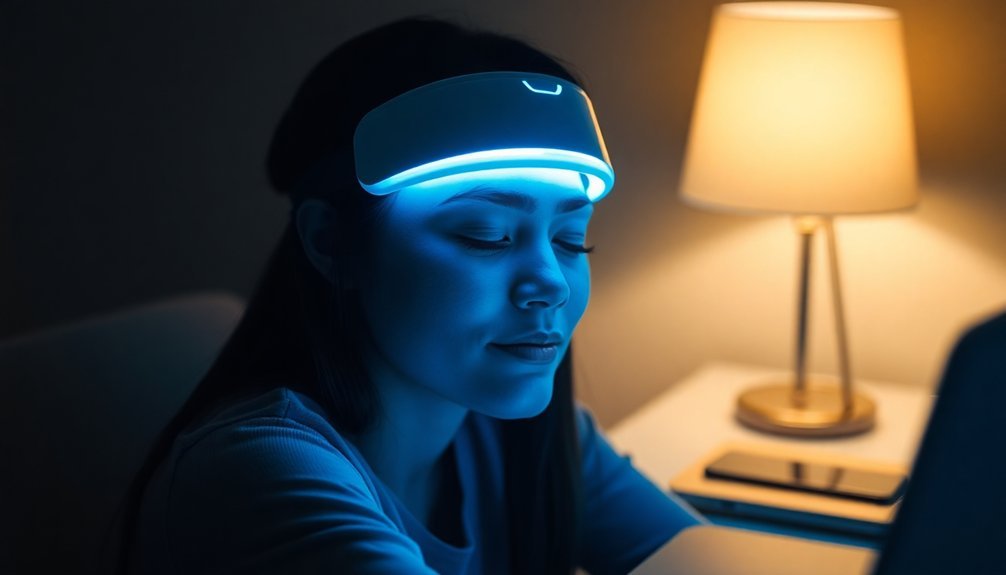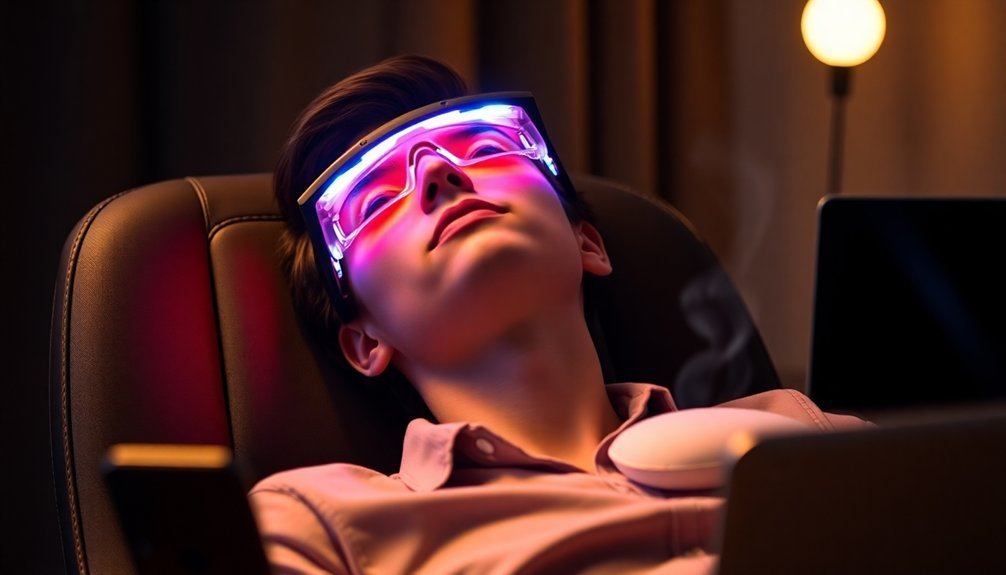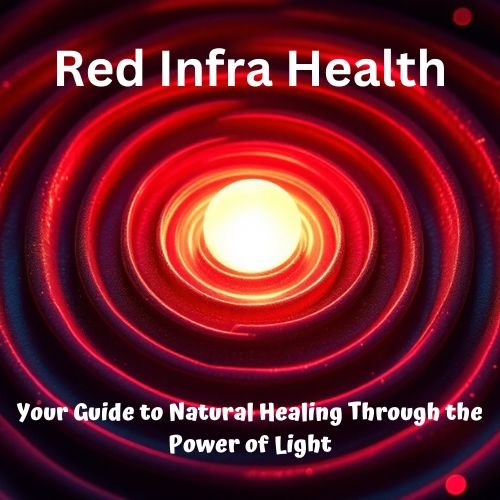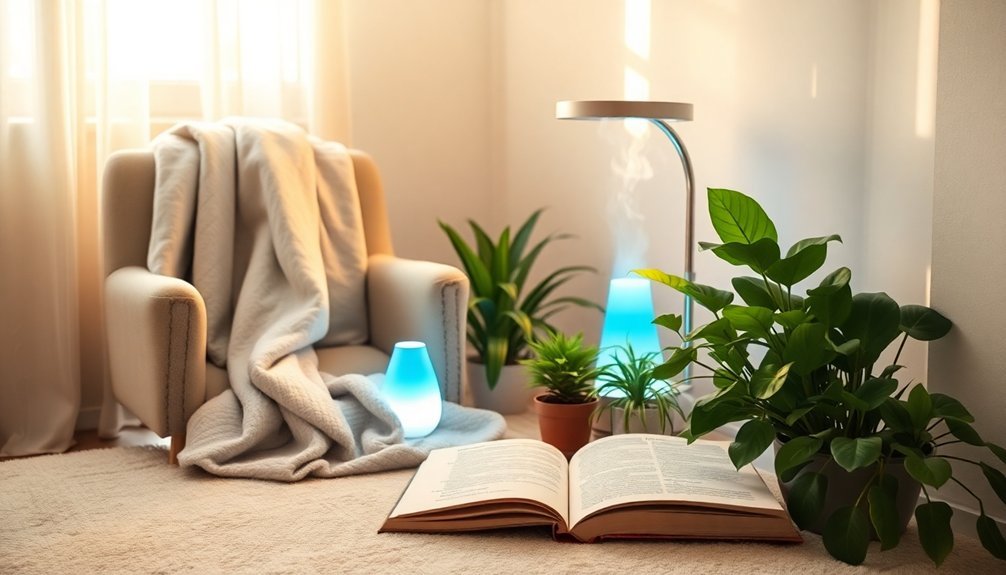Phototherapy offers proven relief for your screen-fatigued eyes through several effective methods. You'll find immediate benefits from red light therapy, which can boost your visual acuity by up to 20% and enhance mitochondrial performance in your retinal cells. For daily relief, try syntonic phototherapy with colored filter goggles to rebalance your nervous system and improve focus. Combat digital eye strain by following the 20-20-20 rule and using computer glasses with anti-reflective coatings. These science-backed solutions, combined with proper workspace setup and regular breaks, can substantially restore your visual comfort. The journey to ideal eye health extends far beyond these basics.
Understanding Phototherapy for Eyes

Light therapy steps into the medical spotlight as a versatile treatment for various eye conditions, using specific wavelengths of light to heal and improve vision. You'll find that phototherapy isn't just a single approach but rather encompasses several treatment methods, from LED applications to laser treatments, each designed for specific eye-related concerns.
When you undergo phototherapy, you're receiving carefully controlled light exposure through specialized equipment. Treatment sessions typically last up to 10 minutes, during which your eyes are exposed to therapeutic wavelengths. The effects of these treatments are often long-lasting for most patients who complete the recommended course.
One notable form is syntonic phototherapy, which uses colored light filters to target your brain's regulatory centers. You'll wear specific colored filter goggles that deliver precise wavelengths to stimulate your visual system and help rebalance your nervous system.
This treatment's particularly effective if you're dealing with common screen-related issues like focusing difficulties or convergence insufficiency. It's also beneficial for more complex conditions such as amblyopia (lazy eye) or strabismus (eye turns).
Your safety's paramount during these procedures, so you'll always receive proper eye protection to prevent any potential retinal damage. The treatment's often integrated into broader vision therapy programs, making it a thorough approach to eye care.
Red Light Benefits and Science
Recent discoveries about red light therapy have revealed remarkable benefits for eye health, particularly in treating screen-related fatigue and age-related vision decline.
Studies show that just three minutes of red light exposure per week can improve your visual acuity by 17-20%, with benefits lasting up to a week after treatment.
The science behind these improvements is rooted in cellular function. Red light therapy works by enhancing your eyes' mitochondrial performance, boosting ATP production, and reducing harmful reactive oxygen species. The therapy has proven to be a painless and relaxing treatment that patients can easily incorporate into their routine.
You'll get the best results when you undergo treatment in the morning, as your mitochondria follow natural circadian rhythms.
What makes red light therapy particularly promising is its broad application in treating various eye conditions. It's proven effective in slowing the progression of age-related macular degeneration (AMD) and reducing inflammation associated with glaucoma.
The therapy uses safe wavelengths in the mid-600nm and mid-800nm ranges, making it a natural, non-invasive treatment option.
Research consistently demonstrates that red light therapy protects your retinal cells from damage and promotes cell survival, offering a scientific solution for maintaining and improving your eye health in our screen-dominated world.
Digital Eye Strain Solutions

While red light therapy offers promising treatment options, addressing digital eye strain requires a thorough approach to prevention and relief. You'll need to implement multiple strategies to protect your eyes during screen time and alleviate existing symptoms.
Poor lighting and screen glare can significantly impact your eye health, leading to increased vision strain. Start by adopting the 20-20-20 rule: every 20 minutes, take a 20-second break to focus on something 20 feet away. This simple practice helps reduce eye fatigue and maintains your focusing ability.
Make sure you're blinking regularly, as extended screen use often reduces your natural blink rate, leading to dry eyes and discomfort.
Set up your workspace properly by adjusting your screen's brightness and contrast, minimizing glare, and maintaining proper lighting conditions. Your monitor should be at arm's length and slightly below eye level.
If you're experiencing persistent symptoms like blurred vision, headaches, or neck pain, consider using computer glasses with anti-reflective coatings or blue light filters.
For immediate relief, try using artificial tears to combat dryness.
Don't skip regular eye exams, as they're essential for monitoring your eye health and getting personalized solutions. If symptoms persist, your eye doctor might recommend specialized options like contoured prism lenses or vision therapy exercises.
Choosing Eye Treatment Devices
Selecting the right eye treatment devices requires understanding their specific diagnostic purposes and capabilities. When you're dealing with screen-related eye strain, you'll need to guarantee proper diagnosis and monitoring through various specialized instruments.
You'll want to start with a phoropter examination to determine if your digital eye strain is linked to uncorrected refractive errors. This device helps pinpoint the exact prescription you need, preventing additional strain from incorrect lens power. The motorized mechanisms in modern phoropters allow for quick and precise adjustments during your eye exam.
For thorough eye health monitoring, you should seek practices that utilize tonometers, as they'll help detect any pressure-related issues that might be exacerbating your symptoms.
Digital fundus cameras and OCT devices are particularly vital if you're experiencing persistent eye strain. These tools provide detailed images of your retina and eye structures, helping identify any underlying conditions that screen time might be aggravating.
The OCT's cross-sectional imaging can reveal subtle changes in your retinal layers that mightn't be visible through other examination methods. By choosing practices equipped with these advanced diagnostic tools, you'll guarantee a detailed evaluation and appropriate treatment for your screen-related eye issues.
Natural Vision Recovery Methods

Beyond advanced diagnostic tools, natural vision recovery methods offer a complementary approach to managing screen-related eye strain. You'll find that combining lifestyle adjustments with specific eye exercises can markedly improve your visual comfort and function.
By incorporating practices like proper hydration, balanced nutrition, and adequate sleep, you're creating a foundation for ideal eye health.
Vision therapy exercises can strengthen your eye muscles and enhance coordination. When you practice eye rotations, focusing exercises, and figure-eight movements regularly, you're actively working to improve your visual system's resilience against digital strain.
- Start with 5-minute eye exercise sessions twice daily, including blinking exercises and eye rotations
- Take regular screen breaks using the 20-20-20 rule: every 20 minutes, look at something 20 feet away for 20 seconds
- Implement the Bates Method's relaxation techniques during your workday
- Consider syntonic phototherapy under professional guidance for enhanced results
Remember that recovery varies among individuals, and consistency is vital for success. While you might be enthusiastic to see immediate improvements, patience and persistence with these natural methods will yield the best long-term results.
Frequently Asked Questions
Can Phototherapy Treatments Be Combined With Traditional Eye Medications or Supplements?
You shouldn't combine phototherapy with eye medications or supplements without your doctor's guidance. It can cause dangerous photosensitivity reactions and side effects. Always consult healthcare providers before mixing any treatments.
How Long Do the Effects of a Single Phototherapy Session Typically Last?
You'll find that a single phototherapy session's effects vary widely. While skin treatments build gradually over multiple sessions, vision benefits can last long-term once you've restored balance, though maintenance sessions may be needed.
Are There Any Age Restrictions for Using Phototherapy Devices at Home?
You'll need to consult your doctor about age restrictions for home phototherapy. While it's typically safe for adults, children under 5 may have special requirements. Always get medical guidance before starting any treatment.
Does Eye Color Affect the Effectiveness of Red Light Therapy Treatments?
Your eye color doesn't affect red light therapy's effectiveness. While there's no specific research on this, the therapy works by stimulating mitochondria in your retina, which functions independently of iris pigmentation.
Can Phototherapy Help With Night Vision or Color Blindness Issues?
While there's no direct evidence that phototherapy helps with night vision or color blindness, you might see some general vision improvements. Currently, other treatments like color-correcting lenses are more proven for these specific conditions.
In Summary
Your eyes deserve rest and recovery from constant screen exposure. Whether you choose red light therapy devices, take regular breaks, or practice natural eye exercises, you've got multiple options to combat digital eye strain. Don't wait until vision problems worsen – start implementing these phototherapy and recovery techniques today. You'll notice improved comfort, reduced fatigue, and better overall eye health with consistent care.





Leave a Reply